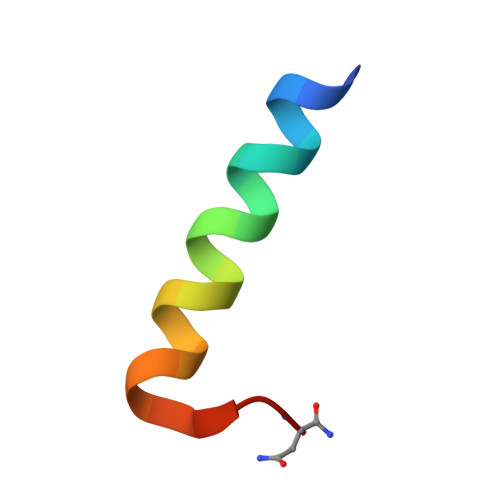Use of a Stereochemical Strategy To Probe the Mechanism of Phenol-Soluble Modulin alpha 3 Toxicity.
Yao, Z., Cary, B.P., Bingman, C.A., Wang, C., Kreitler, D.F., Satyshur, K.A., Forest, K.T., Gellman, S.H.(2019) J Am Chem Soc 141: 7660-7664
- PubMed: 31045358
- DOI: https://doi.org/10.1021/jacs.9b00349
- Primary Citation of Related Structures:
6NIV - PubMed Abstract:
Phenol-soluble modulin α3 (PSMα3) is a cytotoxic peptide secreted by virulent strains of Staphylococcus aureus. We used a stereochemical strategy to examine the mechanism of PSMα3-mediated toxicity. One hypothesis is that PSMα3 toxicity requires fibril formation; an alternative is that toxicity is caused by soluble forms of PSMα3, possibly oligomeric. We find that the unnatural enantiomer (D residues) displays cytotoxicity comparable to that of L-PSMα3. Racemic PSMα3 is similarly toxic to enantiopure PSMα3 (L or D) under some conditions, but the toxicity is lost under conditions that cause racemic PSMα3 to aggregate. A crystal structure of racemic PSMα3-NH 2 displays an α-helical secondary structure and a packing pattern that is reminiscent of the cross-α arrangement recently discovered in crystals of L-PSMα3. Our data suggest that the cytotoxicity of PSMα3 does not depend on stereospecific engagement of a target protein or other chiral macromolecule, an observation that supports a mechanism based on membrane disruption. In addition, our data support the hypothesis that toxicity is exerted by a soluble form rather than an insoluble fibrillar form.
















